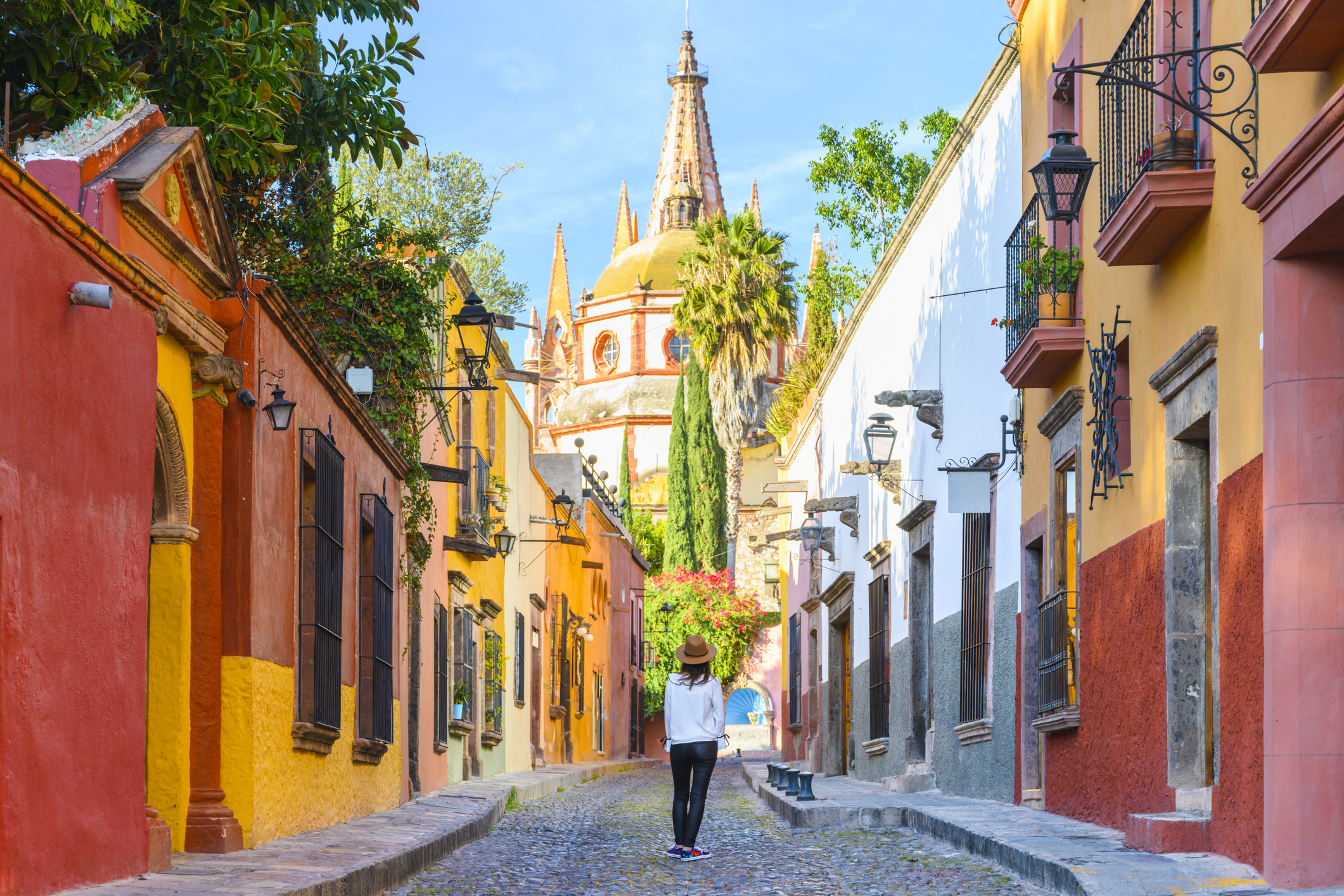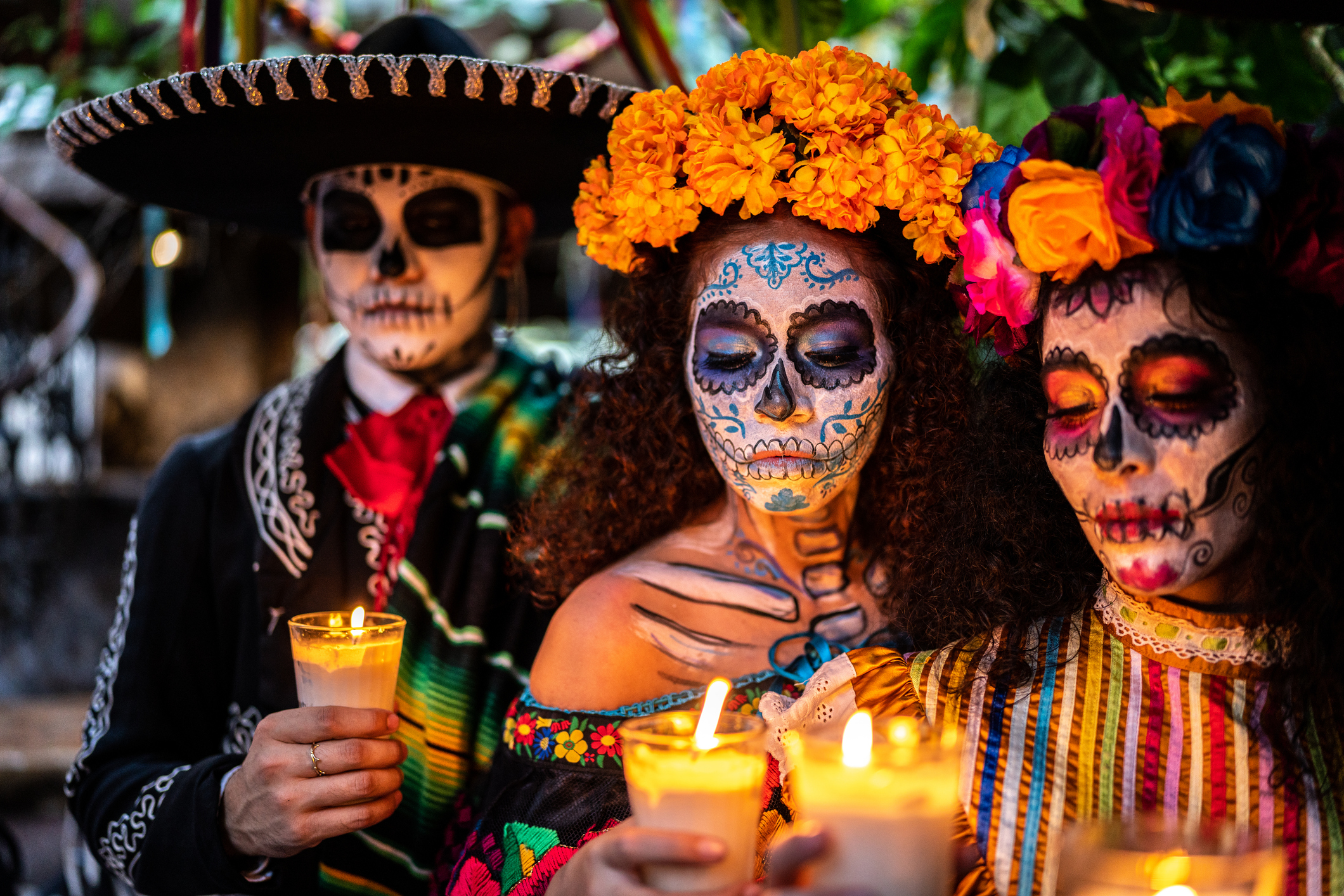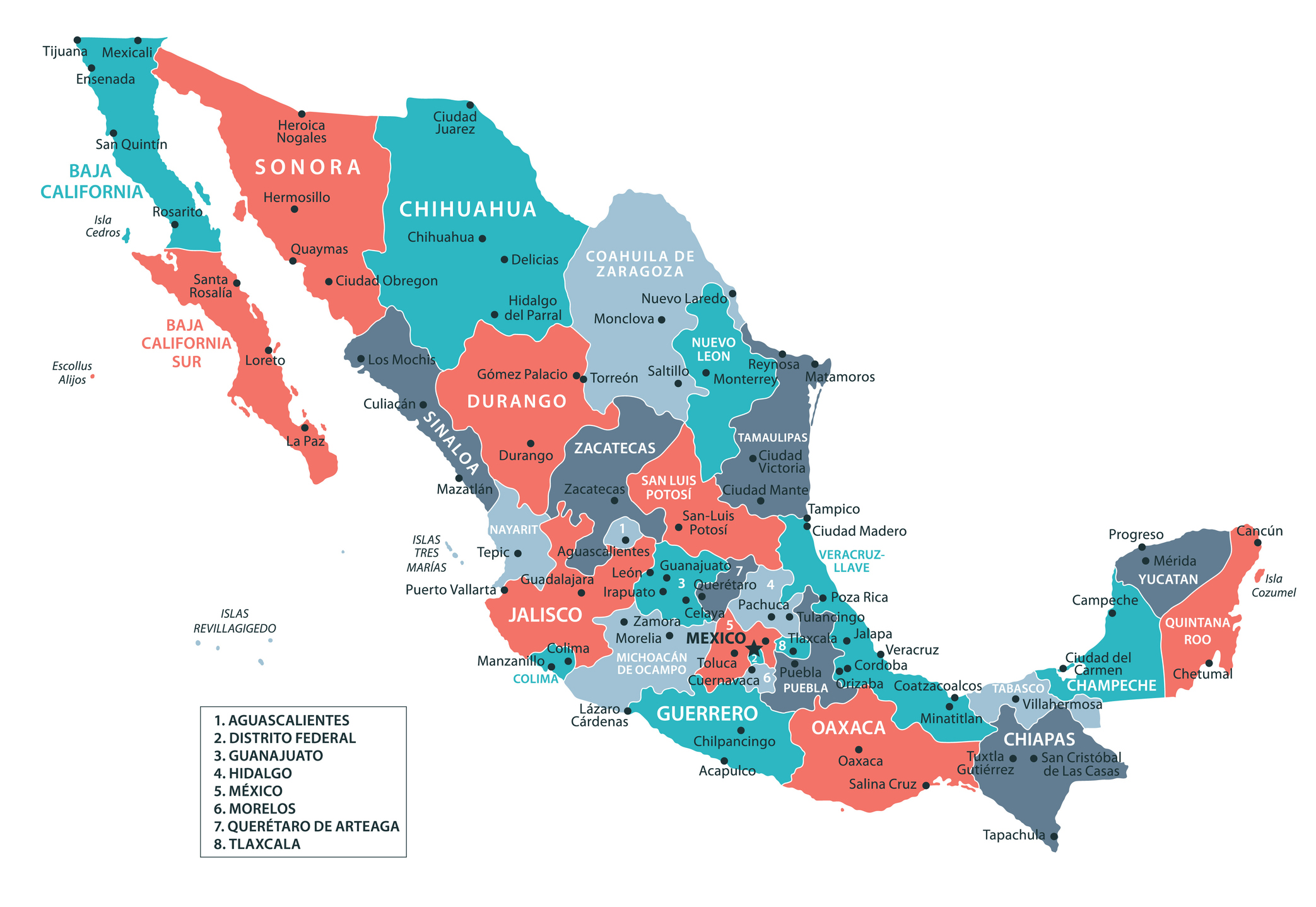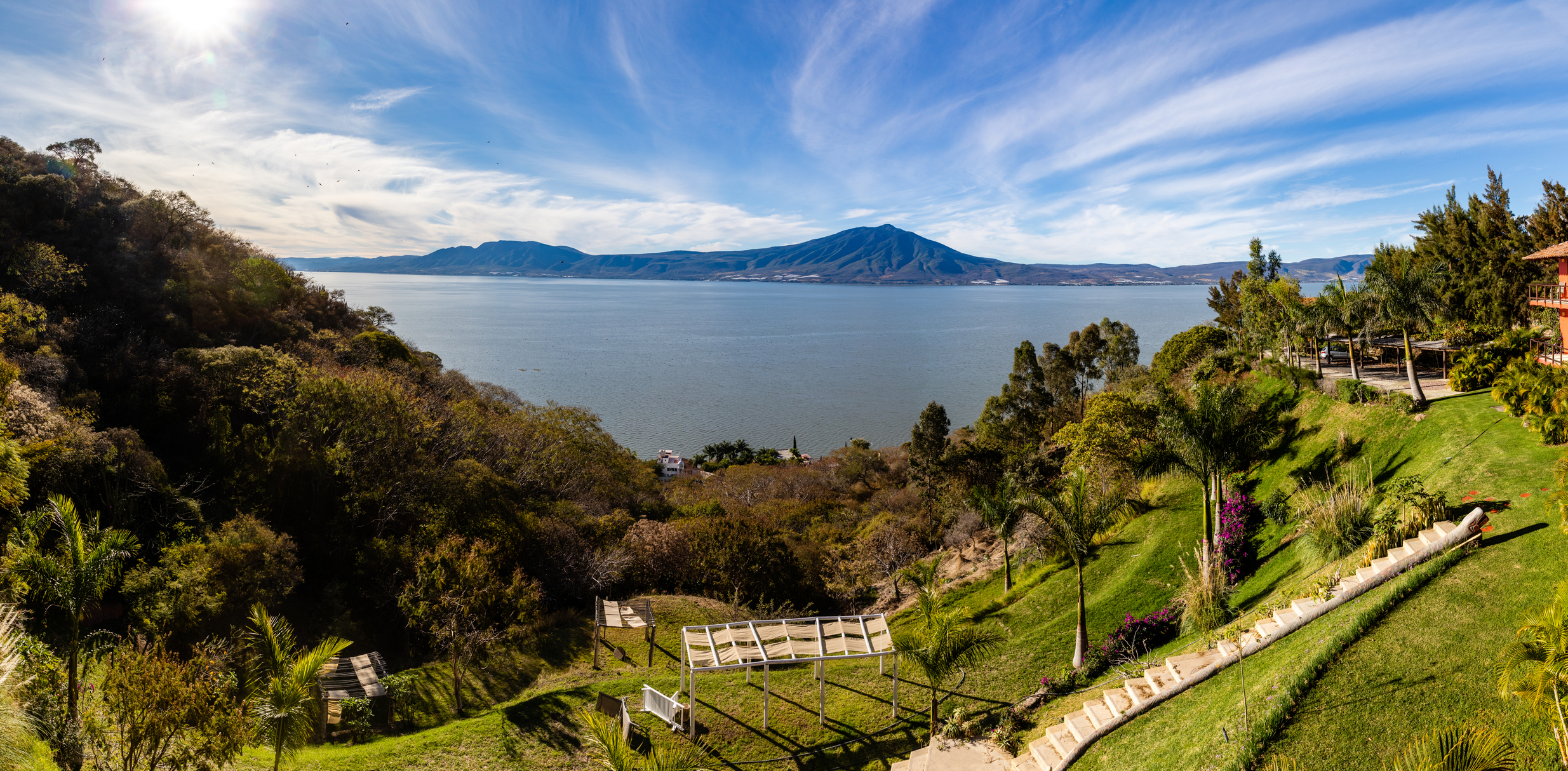Retire in Mexico: Get a Lower Cost of Living Near the US
Many older Americans retire in Mexico because of its laid-back lifestyle, beaches and vibrant culture. Here’s what you need to know to live in Mexico full-time.


Editor’s note: "Retire in Mexico" is part of an ongoing series on retiring abroad. To see all the articles in the series, jump to the end of this article.
You might be tempted to retire in Mexico, especially given rising U.S. economic uncertainty. Mexico is no stranger to people north of the border living in the country — 1.6 million U.S. citizens do, according to the U.S. State Department. With 2,000 miles of shared borders, it’s no secret why so many Americans call Mexico home. But should U.S. retirees make a similar move?
Yes, travel and lifestyle experts say, but you’ll need to balance out the warm climate, scenic aquamarine beaches, and lower cost of living with some complex realities before heading to popular landing spots such as Playa del Carmen, Puerto Vallarta, and San Miguel de Allende, among others.

Sign up for Kiplinger’s Free E-Newsletters
Profit and prosper with the best of expert advice on investing, taxes, retirement, personal finance and more - straight to your e-mail.
Profit and prosper with the best of expert advice - straight to your e-mail.
“Mexico is the most popular international destination for U.S. retirees by a wide margin,” said Tim Leffel, editor at travel publications company Al Centro Media, who’s lived in Guanajuato, Mexico, full-time since 2018. “That's partly because of proximity and great flight connections, but also because this is a big country with a lot of different climate options and style-of-living choices.”
Many American ex-pats struggle with the move for the same reasons. “They make decisions too quickly without doing any kind of trial run and without investing the time to check out different locations,” Leffel said. “Others want a place that's just like the USA but cheaper, and that's a destructive attitude that often leads to disappointment.”
Cultural challenges can also thwart a move south of the border. “Things move slower here, work is not the top priority, and there's a much more fluid attitude about time and punctuality that Type A personalities have trouble adjusting to,” Leffel added.
What “to do” list items do you need to check off before retiring in Mexico as a U.S. citizen? The good news is the list isn’t that long, but every step needs to be covered thoroughly. Here’s a closer look.

Retire in Mexico for a lower cost of living
In Leffel’s hometown of Guanajuato City, you can buy a two-bedroom home for under $150,000, but more money goes a long way.
“$250,000 is a healthier budget for a prime area in or near the historic city center,” Leffel said. “It's hard to find anything listed for more than a million dollars still, though it's a very different story down the road in popular San Miguel de Allende, where the 12,000 or more foreigners have driven up prices.”
Rentals in Guanajuato City fall in the $600 to $1,400 range for a two-bedroom apartment or house.
Elsewhere, the numbers are relatively similar.
In Mazatlán, a choice spot on Mexico’s Pacific coast with more than 10 miles of sandy beaches and a 5-mile boardwalk, purchases and rentals are significantly lower than in beach towns in the U.S.
“Rent costs vary, but you can expect to spend anywhere from $800 to $2,000 monthly, so real estate is a great investment in Mazatlán,” said Lee Harrison, senior editor at Live and Invest Overseas, a living abroad advisory platform. “You can buy a nice ocean-view condo for around $200,000.”
Lifestyle costs beyond home accommodations are also relatively low.
“Everything from food and entertainment to housing and utilities costs less here than in the States or Canada ... but it also costs less than comparable Mexican resort cities, like Puerto Vallarta,” Harrison noted.
Figure on a monthly budget of around $2,000 for a couple living comfortably here, Harrison advised.
Rules for obtaining temporary or permanent residency or an investor visa have been in flux. You may need to demonstrate substantial monthly income, so check the rules before applying. And surprisingly, U.S. consulates have different amounts of required monthly income to establish residency.

The health care experience
Health care is highly affordable, too.
“You can sign up for one of Mexico's national health care systems if you hold a temporary or permanent resident visa,” said I. Murat Coskun, managing partner at Get Golden Visa, a residence and citizenship advisory services firm. “The cost of joining IMSS is very affordable and covers prescription drugs; it ranges from roughly $348 per year for kids and teenagers to about $850 per year for people in their 80s or older.”
Alternatively, the national health care system, INSABI, is free if you're a legal resident. “Depending on your plan, having private health insurance can increase your annual expenses by several thousand dollars,” Coskun said.
Even without insurance, medical care in Mexico can be very affordable. “Most hospitals are modern, well-equipped and clean,” Coskun noted. “Many medical professionals in Mexico have at least a basic understanding of English, and many of them completed all or part of their training in the United States, Canada, or Europe.”
Medical care expenses pale in comparison with those in the United States.
“You can spend between $50 and $75 to see a specialist if you decide to pay for your medical treatment privately,” he added. “Follow-up visits, if necessary, are often covered by that sum. Most pharmacies also provide a ‘consulatorio’ where you can see a doctor for less than $5 if your demands are straightforward.”

Taxes as an expat in Mexico
Generally, foreigners are only subject to Mexican taxes on income sourced from within Mexico unless they're considered tax residents.
“This implies that a U.S. retiree residing in Mexico who doesn’t work or have an income within Mexico is exempt from taxes on their U.S. retirement income,” Coskun said. “The U.S.-Mexico tax compact, which attempts to avoid double taxation and ensures that both nations do not tax the same income simultaneously, is another contributing factor.”
However, a person will be liable for Mexican income tax if they receive local income in Mexico. “That includes earnings from a local business or rental income from a Mexican property,” Coskun noted.
Additionally, Social Security income is not taxed in Mexico.
“There are also huge discounts on property taxes for retirees if they pay their property taxes a few months early,” said Mariana Lange, owner of the Mexico Relocation Guide in Austin, Texas. “Property taxes are already crazy low. Most people don't pay more than $400 yearly on property taxes.”
Lange noted that Mexico also offers discounts to those 60 and older on medications, wills, bus passes and sometimes airfare, depending on the airline.
Where to retire in Mexico: best places to live

The list of potential landing spots in Mexico is long, featuring some names Americans likely know and some they won’t.
“There are so many great places to retire in Mexico,” Lange said. “It just depends on whether the retiree wants a warm or temperate climate, a large or small city/town, close to an airport, and those kinds of things.”
Lange’s top destinations include Lake Chapala (Ajijic and Chapala), San Miguel de Allende, Puerto Vallarta, Mérida, Quéretaro, Guadalajara, and Mexico City, among others.
“Honestly, retirees are moving all over Mexico nowadays,” Lange said. “Sometimes, I hear about clients moving to a rural town in the middle of nowhere — and they love it."
Where you live in Mexico ultimately depends on climate preferences and the size of the foreign community you want around you.
“Mexico is about as wide as the USA and has almost as much geographical variety, so this is a very personal experience,” Leffel said. “The most popular places for foreigners are the tourist beach locations like Playa del Carmen, Puerto Vallarta, and Los Cabos, with a few smaller ones like Mazatlán, Loreto, and Zihuatanejo also having a sizable number of foreigners.”
In the interior, Mexico City (called "el D.F.," short for "Distrito Federal"), San Miguel de Allende, and Lake Chapala are the most popular areas, but you'll also find plenty of expats in Oaxaca, Guanajuato, and Querétaro. “Then again, there are plenty more scattered around in smaller numbers in other cities.”
There are abundant direct flights from the U.S. to major cities in Mexico.
“Mexico has more flight connections with the USA than any other country, by a wide margin,” Leffel said. “Even from my Leon/Guanajuato airport (Guanajuato International Airport), we can fly to the USA on six different airlines daily. If it's not direct, the beach resort areas and Mexico City have flights to almost anywhere in the States with just one hub connection.”
Safety concerns
Lange believes that crime reports in Mexico are overblown, and safety issues are no riskier than in other foreign locales.
“Yes, there is crime in Mexico like there is crime in any other country,” she said. “However, the cartel issues have been overly sensationalized in the media for the past 10 years.”
While cartels exist, most people never encounter them and have never been a victim of crime by cartels in their entire lives in Mexico.
“Having said that, it is also important for American retirees not to leave their common sense at the border,” Lange noted. “They should still practice being aware of their surroundings as they should be anywhere. It is also very important for them to understand that things work differently in Mexico, and unfortunately, there are bad apples who prey on the newcomers who don't know what they don't know and scam them.”
Those scams are particularly likely to target U.S. newcomers, so be prepared.
“It's important for people to do their due diligence when hiring a realtor, hiring an immigration expert, buying a home, or making any big purchases,” Lange advised. “We give all of our customers a complete directory of vetted contacts across Mexico that can help them with their residency visas, find rentals, drive them to Mexico, move their household goods, help them with health care insurance, help them buy a house, give clients a private relocation tour and more.”
If crime is a big issue for retirees, head toward well-policed locales. Safe and attractive areas for retirees include Mérida (Yucatán), Lake Chapala/Ajijic (Jalisco), Puerto Vallarta (Jalisco), San Miguel de Allende (Guanajuato), Querétaro (central), La Paz (Baja California Sur).
“These regions are characterized by low crime rates and strong community structures,” Coskun said. “In addition, there are places like Ensenada (Baja California), Mazatlán (the safe coastal part of Sinaloa), and Huatulco (Oaxaca), which we are starting to hear about more and more often, and which are considered safe.”
No matter where you live, it is essential to take basic safety measures.
“Don’t carry valuables in the open, avoid deserted places at night, be careful when using ATMs and opt for registered taxi apps (think Uber and Didi),” Coskun said. “When traveling by car, it is also advisable to use toll highways, ensure home security, and keep abreast of local safety advisories and developments.”
Finally, consider the local environment when deciding where to settle. Some areas have poor air quality or polluted bodies of water (such as Lake Chapala) that might limit your enjoyment of the outdoors.

The takeaway on retiring in Mexico
Mexico remains a leading country for retirees from the U.S. and Canada for various reasons.
“Many people have vacationed in Mexico, so they're already familiar with some level of the culture,” Lange said. “We are next-door neighbors, which makes it easy to get back home or have family members visit easily.”
Perhaps most important, a U.S. retiree’s retirement savings and Social Security can go much further in Mexico. “Plus, the health care system and level of care is many times better and more affordable than anything in the U.S.,” Lange said.
Like most foreign countries, Mexico will take some getting used to.
Although English is widely spoken there, Harrison said that lack of Spanish is one of the primary sources of expat inconvenience. “This shows up when dealing with utility workers, internet service technicians, car mechanics, or workers who typically don’t speak English,” he added.
However, “due to Mexico’s ease of access, widespread use of English, and 180-day visitor stays, there aren’t many issues to tackle,” Harrison said. “If you’d rather be a resident from the start, Mexico is the only country I know of that allows you to qualify with savings, such as a 401(k), instead of retirement income.”
More on Where to Retire Abroad
- Living in Portugal as a US Retiree
- Living in Panama Provides Stability and Charm
- Retire in Thailand, Where 'The White Lotus' Was Filmed
- Where to Retire: Living in the Dominican Republic
- Where to Retire 2025: Puerto Rico
- Return to Your Home Country to Retire: Repatriation Retirement
- How to Manage Retirement Savings When Living Abroad
Get Kiplinger Today newsletter — free
Profit and prosper with the best of Kiplinger's advice on investing, taxes, retirement, personal finance and much more. Delivered daily. Enter your email in the box and click Sign Me Up.

A former Wall Street bond trader, Brian O’Connell is the author of two books: “The 401k Millionaire” and “CNBC’s Creating Wealth.” He's written for national finance publications such as TheStreet.com, CBS News, The Wall Street Journal, U.S. News & World Report, Forbes, Fox News and others. With 20 years of experience covering business news and trends, he believes education is the best gift a financial consumer can receive – and brings that philosophy to his work. Brian is a graduate of the University of Massachusetts, and currently resides in Palmas del Mar, Puerto Rico during the winter, and in Bucks County, Pa., when Mother Nature cooperates.
-
 Is Walmart Plus Worth It?
Is Walmart Plus Worth It?There are tons of exciting Walmart Plus benefits – but are they worth the $98 annual fee?
By Rachael Green
-
 My Great Retirement Dream: Sell My House, Downsize, Live off the Proceeds and Dabble in Stocks. Can I Do It?
My Great Retirement Dream: Sell My House, Downsize, Live off the Proceeds and Dabble in Stocks. Can I Do It?I ask an expert financial planner if my retirement dreams are realistic — or if my head is in the clouds.
By Donna Fuscaldo
-
 My Great Retirement Dream: Sell My House, Downsize, Live off the Proceeds and Dabble in Stocks. Can I Do It?
My Great Retirement Dream: Sell My House, Downsize, Live off the Proceeds and Dabble in Stocks. Can I Do It?I ask an expert financial planner if my retirement dreams are realistic — or if my head is in the clouds.
By Donna Fuscaldo
-
 Five Trusts You Need to Know About and the Best Time to Use Them
Five Trusts You Need to Know About and the Best Time to Use ThemYou can use trusts to cement your legacy, organize your estate and limit your exposure to estate and gift taxes.
By Donna LeValley
-
 Americans Worry More About Going Broke in Retirement Than Dying, Study Shows
Americans Worry More About Going Broke in Retirement Than Dying, Study ShowsInflation, taxes and Social Security are the three top concerns for retirees, according to the 2025 Allianz Annual Retirement Study
By Kathryn Pomroy
-
 Doing This With Your 401(k) Could Cost You $18,000
Doing This With Your 401(k) Could Cost You $18,000Your old 401(k) accounts may be slowly bleeding money — because the power of compounding can work against you, too.
By Christy Bieber
-
 Three Options for Retirees With Concentrated Stock Positions
Three Options for Retirees With Concentrated Stock PositionsIf a significant chunk of your portfolio is tied up in a single stock, you'll need to make sure it won't disrupt your retirement and legacy goals. Here's how.
By Evan T. Beach, CFP®, AWMA®
-
 Before You Remarry: 10 Important Things to Consider
Before You Remarry: 10 Important Things to ConsiderRemarry carefully, because love gets complicated the second time around.
By Jennifer Waters
-
 Despite Economic Uncertainty, Americans Remain Confident About Retirement, Survey Shows
Despite Economic Uncertainty, Americans Remain Confident About Retirement, Survey ShowsSaving and spending is a concern but most workers and retirees think they are on track based on a new survey.
By Donna Fuscaldo
-
 My Advice for Enrolling in Medicare Part B — Based on Experience
My Advice for Enrolling in Medicare Part B — Based on ExperienceEnrolling in Medicare is notoriously complicated and can result in penalties if you get the timing wrong. Here are some valuable tips for first-timers.
By Sandra Block